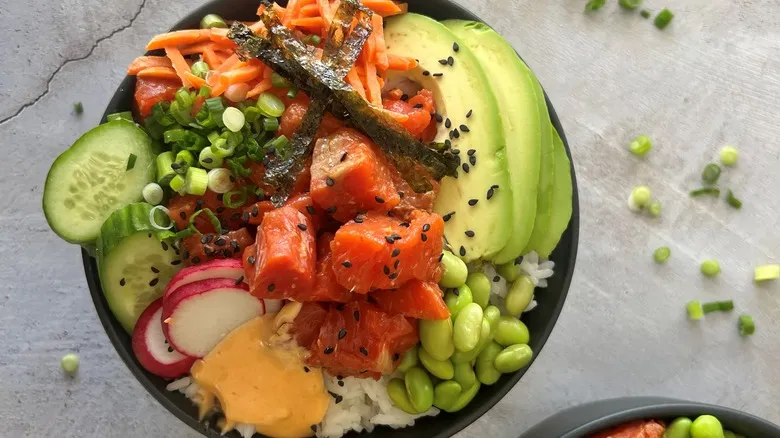Collect the ingredients for the colorful salmon poke bowl
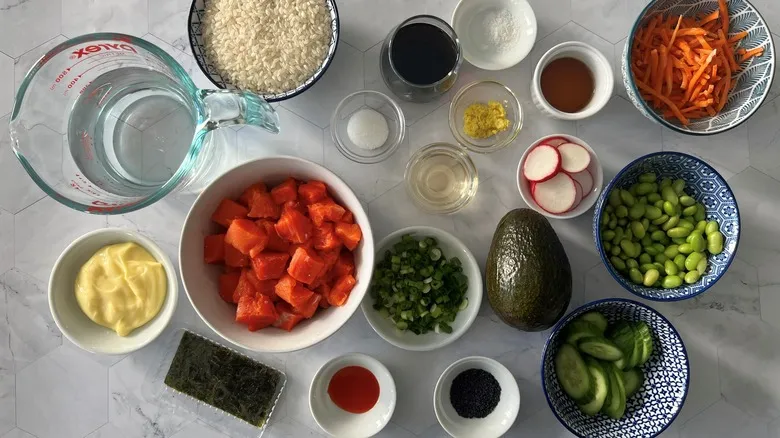
This recipe begins with salmon that is marinated in sesame oil, soy sauce, and ginger. You'll also require sushi rice that has been seasoned with rice vinegar, sugar, and salt. For the poke bowls, De Witt incorporates edamame, avocado, cucumber, radishes, carrots, nori, sesame seeds, and scallions, finishing the dish with a blend of mayonnaise and sriracha.
Step 1: Make the marinade
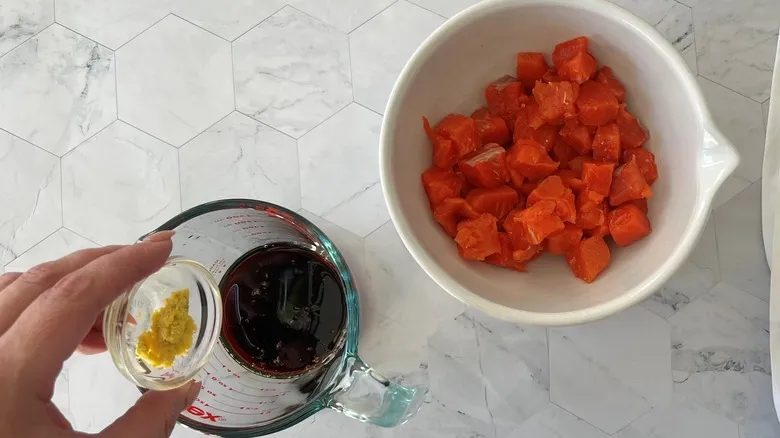
Combine sesame oil, soy sauce, and ginger in a small bowl, and mix well.
Step 2: Marinate the salmon
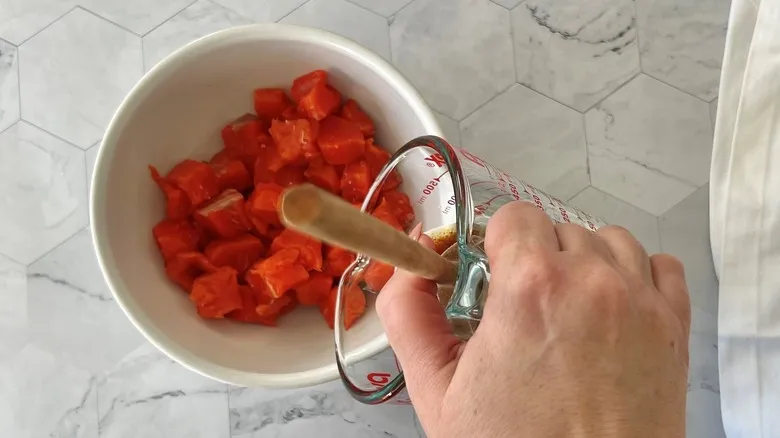
Combine the sesame oil mixture with the salmon and stir thoroughly. Chill in the refrigerator for 30 minutes.
Step 3: Season the rice vinegar
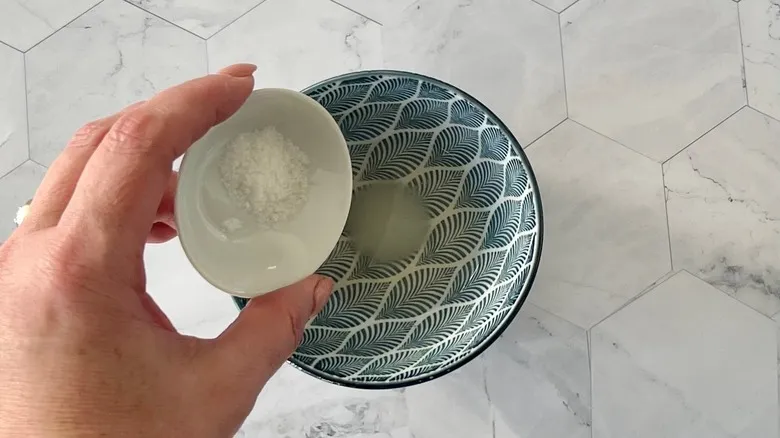
In a small bowl, combine rice vinegar, sugar, and salt. Mix well and set aside.
Step 4: Cook the rice
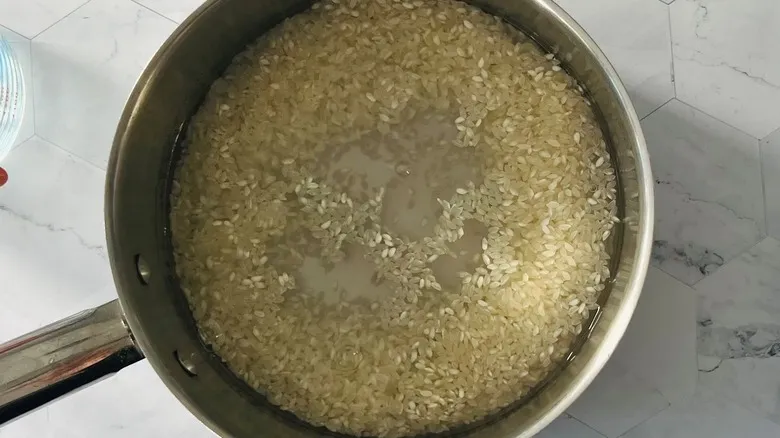
In a spacious saucepan, combine the rice and water. Heat until it reaches a gentle boil, then lower the heat to medium-low to keep it simmering. Cook for 15-18 minutes or until the liquid is fully absorbed and the rice is soft. Remove from heat and mix in the vinegar mixture. Keep the rice warm.
Step 5: Flavor the mayonnaise with sriracha
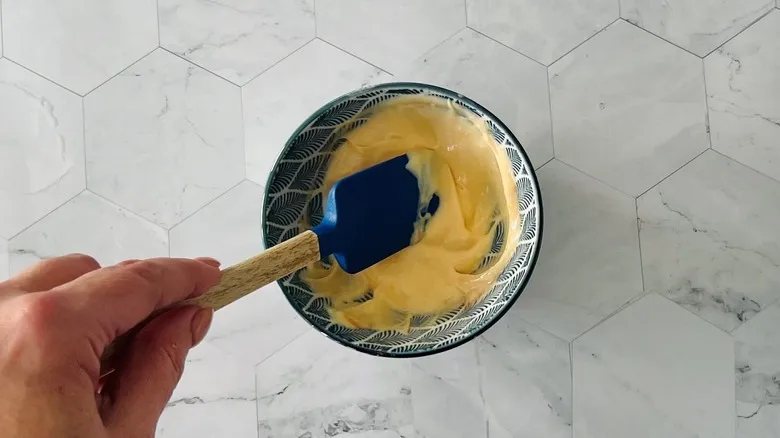
Prepare the sauce by mixing together the mayonnaise and sriracha. Feel free to add extra sriracha to taste.
Step 6: Build the poke bowls
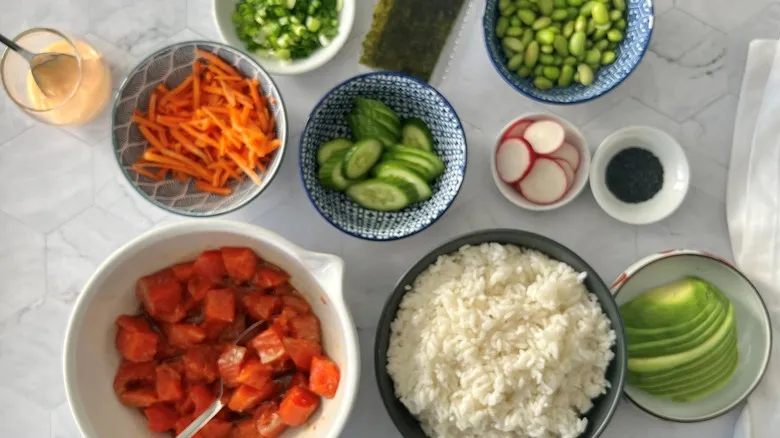
Gather the bowls. Split the rice into 2 large bowls. Add salmon, edamame, avocado, radishes, cucumber, and carrots on top, then finish with a drizzle of sriracha mayonnaise, nori, sesame seeds, and scallions for garnish.
What kind of salmon should I choose for the colorful salmon poke bowl?
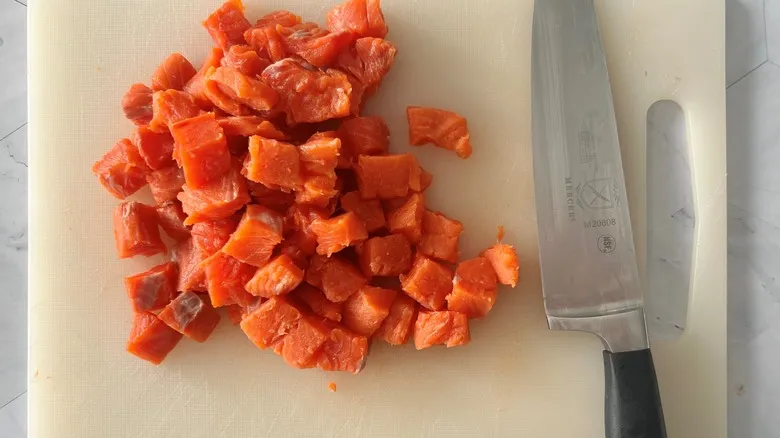
Before you begin gathering the ingredients for your salmon poke bowls, it's essential to keep in mind, as De Witt points out, that "sushi-grade salmon is essential for this recipe." While any fish from the supermarket can be suitable for grilling, baking, or pan-frying, only sushi-grade fish has been certified safe for raw consumption.
De Witt also shares her preference for using sockeye salmon in this dish, noting its rich flavor and firmer texture compared to other salmon varieties, which makes it ideal for marinating. If sockeye isn't available, she suggests that "Alaskan salmon would be a great alternative." Additionally, De Witt provides a helpful tip for saving time: if you purchase your fish from a fish market, the vendor might be willing to remove the skin for you, eliminating that extra step.
How should I prepare the salmon for the colorful salmon poke bowl?

If you’re not fortunate enough to have a helpful fishmonger who can skin your sushi-grade salmon, De Witt has some tips for you. She suggests starting by placing the fish skin-side down on a cutting board and using a sharp knife to carefully slide between the skin and the salmon. (For your convenience, we also provide a guide on selecting the right knife for each task.) Her instructions continue: "With one hand holding the loosened skin, use the knife, angled away from you, to detach the skin from the fillet."
In addition to skinning the salmon, it’s important to ensure it’s free of any small bones. "To find the pin bones," De Witt advises, "run your finger along the cut side of the fillet, then use tweezers to remove them." Once the salmon is free of skin and bones, you can rinse it, pat it dry, and cut it into bite-sized cubes for marinating. De Witt warns against marinating the salmon for more than 45 minutes, as it may begin to break down. She also mentions that you can add scallions to the marinade if you prefer, rather than waiting to add them at the end.
Recommended

Thai-Inspired Coconut And Pumpkin Soup Recipe

The Melting Mistake That Ruins Nacho Cheese
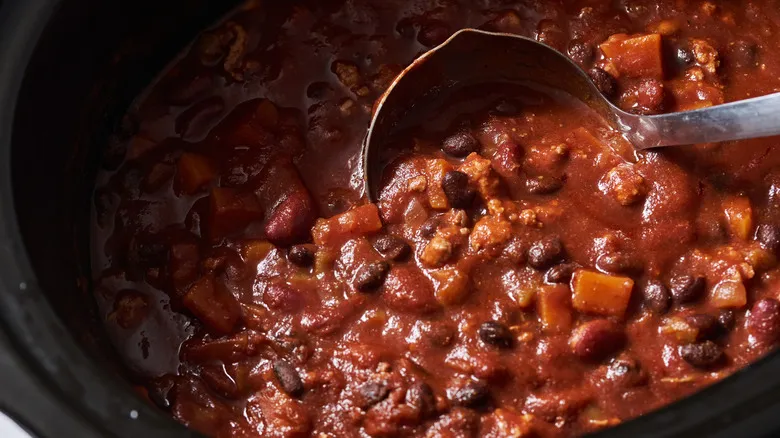
Easy Slow Cooker Spicy Turkey Chili Recipe

Traditional Croque Madame Recipe
Next up

